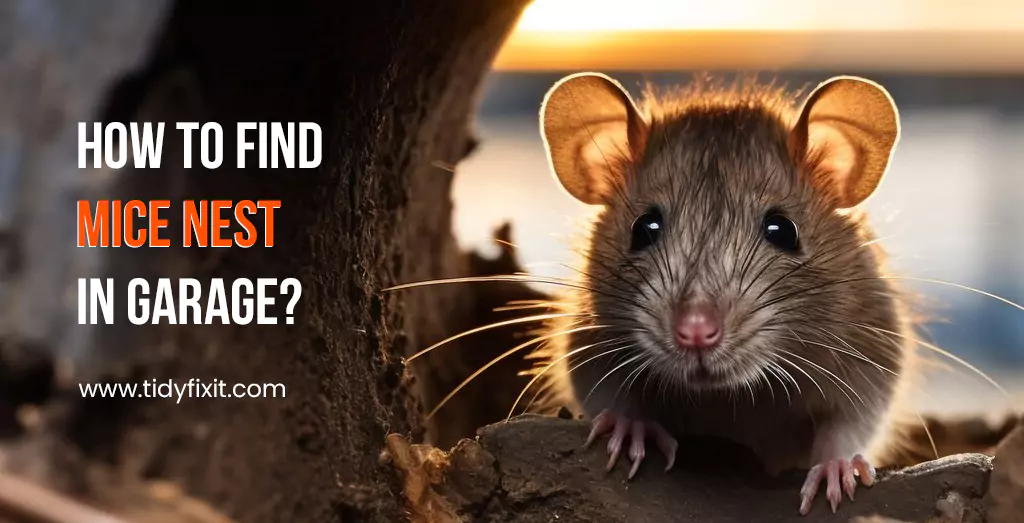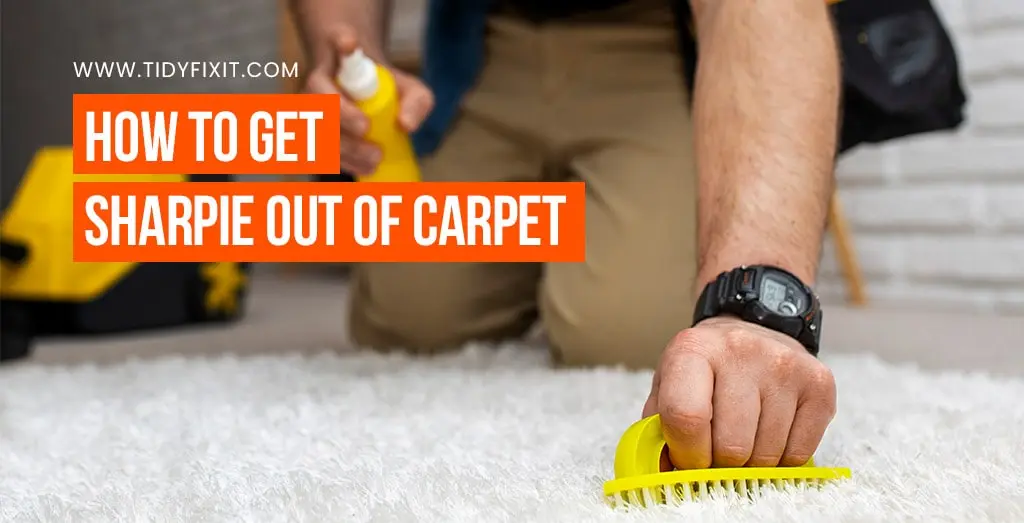To find mice nest in garage, inspect dark corners, cluttered areas, and chewed materials. Once you have located the nest, take precautions to remove it safely.
Finding a mouse nest in your garage can be a concerning situation. Not only can these critters cause damage to your property, but they also pose health risks due to the potential spread of diseases. Mice are notorious for creating nests in hidden areas, making it crucial to identify their locations for effective removal.
In this guide, we will provide you with practical tips on how to find mouse nests in your garage. By inspecting dark corners, cluttered areas, and chewed materials, you can track down these nests and take the necessary steps to eradicate them. With proper precautions, you can restore the safety and cleanliness of your garage space.
Related Post: 5 Best Tips to Keep Spiders Out of Garage
Signs Of Mice Nest In Garage
When it comes to maintaining a clean and pest-free garage, it is essential to be vigilant about the potential presence of mice. Knowing the signs of a mouse nest in your garage can help you take proactive steps to address the issue. Identifying these signs early on can prevent damage to your property and ensure a healthy environment. Let’s explore the common indications that may suggest the presence of a mouse nest in your garage.
Nesting Materials
If you are wondering where mice nest in a garage, spotting nesting materials is a key indicator. Look out for shredded paper, fabric, or insulation in the corners, storage areas, or near potential entry points. Mice often gather these materials to build their nests, providing them with a warm and secure environment to breed and raise their young.
Foul Odor
One of the first signs that may alert you to the presence of a mouse nest in your garage is a foul odor. The accumulation of mouse droppings, urine, and decaying nesting materials can emit a distinct and unpleasant smell. If you detect an unexplained musty or ammonia-like odor in your garage, it is essential to investigate further for potential mouse infestations.
Chewed Wires Or Insulation
Chewed wires or insulation are clear indicators of mouse activity in your garage. Mice are known for their gnawing behavior as they seek to create pathways, gather nesting materials, and sharpen their teeth. Check for any damaged wires, cables, or insulation that may suggest the presence of these rodents.
Related Post: 5 Best Natural Ant Barrier
Mice Activity In Garage
If you suspect that mice have taken up residency in your garage, it’s crucial to identify their presence before taking any action. By understanding the signs of mouse activity, such as droppings, gnaw marks, and tracks, you can determine where they are nesting and develop an effective plan to get rid of them.
Droppings
One of the first indications of mouse activity in your garage is the presence of droppings. These small, dark pellets are typically found in corners, along baseboards, and near potential nesting spots. The frequency and quantity of droppings can provide valuable information regarding the extent of the infestation. Ensure to wear gloves and a mask while handling or cleaning the droppings to avoid potential diseases.
Gnaw Marks
Mice have the habit of constantly gnawing on various materials to keep their teeth trimmed and sharp. Consequently, gnaw marks on objects such as wires, wooden beams, and plastic containers suggest that mice are present in your garage. Pay close attention to chewed wires, as they can pose fire hazards. Identifying these gnaw marks can help you pinpoint potential nesting areas and take appropriate measures to prevent further damage or infestation.
Tracks
Another effective way to confirm the presence of mice in your garage is by looking for tracks. Mouse tracks, which appear as small footprints, can be found on dusty surfaces or even in fine sawdust. If you notice any tracks, it is a clear indication that mice have been wandering around your garage. By locating the tracks, you can identify the areas where they are most active, enabling you to strategically set traps or bait. You can also lay down a thin layer of talcum powder or flour to enhance the visibility of tracks.
Way to Find Mice Nest in Garage
Mice can be a nuisance, especially when they make your garage their cozy home. It’s important to find mouse nests in your garage to prevent further infestations and damage to your property. In this section, we will discuss how to search for mouse nests effectively and efficiently.
Areas To Check
Knowing where mice typically nest in a garage can help you narrow down your search and increase your chances of finding their hiding spots. Mice prefer warm, secluded areas close to a food source. Here are the areas you should check:
- Storage boxes and containers: Mice love to nest in cluttered areas, so make sure to inspect any storage boxes or containers in your garage.
- Behind appliances: Move any appliances, such as refrigerators or washing machines, and look for signs of nesting behind or underneath them.
- Garage walls and corners: Check the walls and corners of your garage for chewed materials or droppings, as these are indications of mouse activity.
- Attic or loft space: If your garage has an attic or loft space, be sure to investigate these areas as well. Mice often nest in insulation or behind stored items.
- Underneath vehicles: Mice can take refuge in the engine compartment or underneath vehicles. Take a peek underneath your car or truck to see if you spot any telltale signs.
Using A Flashlight
A flashlight can be a helpful tool when searching for mouse nests in dark or hard-to-reach areas of your garage. Follow these steps to use a flashlight effectively:
- Ensure you have a reliable, fully charged flashlight ready for use.
- Turn off the lights in your garage to enhance visibility.
- Start inspecting the areas mentioned above, using the flashlight to illuminate dark corners or crevices.
- Look for shredded materials, such as fabric or paper, which mice often use for building their nests.
- If you find a potential nest, look closely for any signs of mouse activity, such as droppings or chewed wires.
Removing Obstacles
Before you begin your search, ensure that you remove any obstacles that may obstruct your view and access to potential mouse nesting spots. Declutter your garage by organizing and removing unnecessary items that could obstruct your inspection process. Clear pathways, move boxes, and containers, and create a clean environment that allows you to thoroughly investigate all areas.
By systematically inspecting the areas where mice commonly nest, using a flashlight to enhance visibility, and removing obstacles, you can effectively locate mouse nests in your garage. Once you have identified the nesting spots, you can take the necessary steps to remove the nests and implement preventative measures to keep mice away.

Preventing Mice Nest in Garage
Mice are notorious for finding their way into garages, where they can create nests and cause damage. Taking proactive steps to prevent mouse infestations can save you from the headache of dealing with these unwanted visitors. Here are some effective strategies for keeping mice out of your garage.
Sealing Entry Points
To prevent mice from nesting in your garage, it’s essential to seal all potential entry points. Inspect the exterior of your garage for any gaps, cracks, or holes that mice could use to gain access. Use steel wool, caulk, or weatherstripping to seal these openings and make it difficult for mice to enter.
Reducing Food Sources
Mice are attracted to garages with readily available food sources. Keep all food containers tightly sealed and stored in plastic containers to prevent mice from accessing them. Additionally, make sure to clean up any spills or crumbs promptly to remove potential food sources for these pests.
Using Traps Or Repellents
Utilizing mousetraps or natural repellents can be an effective way to get rid of mice in the garage. Place traps along known mouse pathways, such as near walls or dark corners. Natural repellents such as peppermint oil or ultrasonic devices can also help deter mice from nesting in your garage.
Removing Mouse Nests
Mice are notorious for making nests in garages, and if left unchecked, they can cause damage and spread diseases. It is crucial to remove these mouse nests properly to maintain a clean and safe garage environment. In this section, we will discuss the steps to remove mouse nests and ensure your garage is mouse-free.
Wearing Protective Gear
Before you start removing mouse nests, it is important to protect yourself by wearing appropriate gear. This includes wearing gloves, a mask, and long-sleeved clothing to minimize direct contact with the nests.
Using Disinfectant
Once you have your protective gear on, it’s time to deal with the mouse nests. Begin by spraying a disinfectant solution on the nests, as this will help sterilize the area and kill any potential bacteria, viruses, or parasites.
To make your disinfectant solution at home, mix one part bleach with ten parts water. This solution is effective in destroying any pathogens that may be present in the nests.
Proper Disposal Of Nests
After spraying the nests with disinfectant, carefully remove them using a disposable glove or a plastic bag. Seal the nests in a plastic bag to prevent any contamination or spread of allergens. It is essential not to touch the nests directly with your bare hands.
Once you have sealed the mouse nests in a bag, tie it securely and dispose of it in an outdoor trash bin. This prevents any further infestation and ensures the nests are far away from your garage.
Remember, removing mouse nests is only one part of the process. To prevent future infestations, take measures such as sealing any gaps, cracks, or holes in your garage, eliminating food sources, and maintaining cleanliness.
By following these steps, you can effectively remove mouse nests from your garage and create a pest-free environment. Say goodbye to unwanted mice!

Frequently Asked Questions Of How To Find Mice Nest in Garage
How Can I Find A Mouse Nest In My Garage?
To find a mouse nest in your garage, look out for shredded materials such as paper or fabric, areas with droppings, chewed wiring, and small holes in insulation or walls. Mice often make nests in secluded areas within your garage, such as behind stored items or in corners.
What Are Common Signs Of A Mouse Nest In A Garage?
Common signs of a mouse nest in a garage include a strong odor, small holes or gnaw marks on stored items, chewed-up cardboard boxes, and small piles of shredded materials like paper or fabric. Additionally, you may notice droppings or urine stains near the nesting area.
How Do Mice Build Nests In Garages?
Mice build nests in garages by collecting shredded materials like paper or fabric and constructing them into a compact, hidden structure. They often choose secluded areas in corners, behind stored items, or within insulation or walls. Mice prefer warm and dry places for their nests, making garages an ideal location for them.
Are Mouse Nests In Garages Dangerous?
Yes, mouse nests in garages can be dangerous. Mice can cause damage to stored items, chew through electrical wires, and spread diseases through their droppings and urine. They can also attract other pests, such as ticks and fleas. It is important to identify and remove mouse nests promptly to avoid these risks.
Conclusion
Finding a mouse nest in your garage requires a thorough inspection and attention to detail. Taking proactive measures, such as sealing entry points and removing potential nesting materials, can help prevent future infestations. Regular monitoring and maintenance are essential to keep your garage rodent-free and maintain a safe and clean environment.



